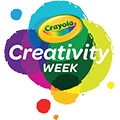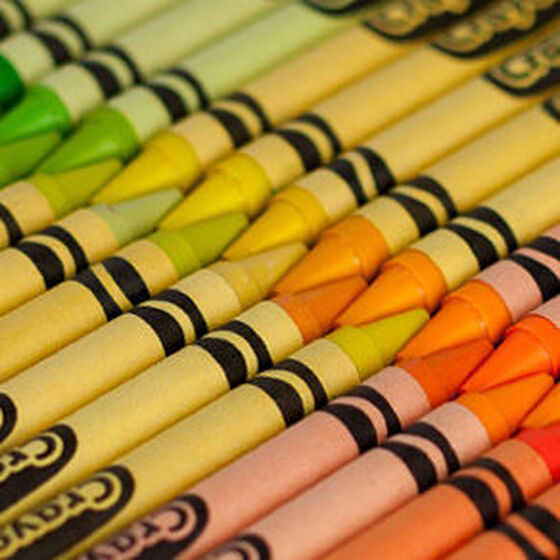-
Step 1
Discuss with students what imaginative art is while viewing work from a 20th century farm village. This may be the first time students draw and rotate a folded drawing paper, so encourage them as they meet the challenge!
-
Step 2
Display an image of Marc Chagall's "I and the Village". Ask students to identify at least three unusual or impossible images, such as a green man, an upside down woman and upside down houses. Explore symbolism and "hidden" or hard to read images such as the tree, and planets as the seasons relate to farming cycles.
-
Step 3
Model how to diagonally fold the 9" X 12" (21 cm x 31 cm) sheet of white drawing paper so it looks like a folded napkin. Explain that like the profile view of the man in the painting, students will draw a profile, using pencil, along the longest side of the folded paper.
-
Step 4
Illustrate how combining the shapes of a capital D (for the forehead), a slanted V (for the nose), a "3" for the lips and a "J" for the chin, can help make the profile large enough so the neck at the bottom of the "J" should be drawn to complete the profile along the full length of the left side of the triangle. The bottom of the "D" forms the triangular shape of the eye in a profile side view. Model erasure clean-up to finalize the profile and make it more realistic once the face is completed using letter shapes.
-
Step 5
Rotate the napkin fold so that the two points are at the bottom, (a W format) and the profile is facing downward. Opposite the profile,using pencil draw a tree trunk, tree branches and growing from the tree are impossible objects such as students favorite candy, toys or clothing, etc.)
-
Step 6
When completed, outline ALL pencil details in marker, but do not color details until side two is completed. The profiled face should be colored a hue that a human cannot have in real life (so no peach or brown allowed)!
-
Step 7
Flip over the "W" format to the blank side of the white paper. Ask students to draw an insect or animal in a habitat that it could not exist in. Just draw one, large insect or animal in the middle of the paper. Students determine a line to draw across the top to define the habitat, using the same process of outlining in pencil, then tracing over with Crayola Washable Fine Line Markers. (ex.: a zigzag for the flames inside a volcano, or scallops for clouds).
-
Step 8
Share exemplars of this "Impossible habitat" such as a fish in the clouds, a bird under water, and any living thing in outer space or a volcano, if students get stuck.
-
Step 9
Stress that once side two is completed, students should unfold their drawing, and then color in all areas until all white space disappears. Crayola Fine Line Markers, Erasable Colored Pencils and/or Construction Paper Crayons can help to create the color schemes students want.
-
Step 10
Encourage students to self-assess their artwork. Did you detail a large profile on side one, and include a tree with impossible fruit growing on its branches? Did you place an animal or insect in an environment which was impossible for its survival on side two? When completing coloring the unfolded composition did you extend the color of the profile to the edge of the line drawn for the edge of the environment, to unify the picture?
-
Step 11
The last step before signing their artwork in the bottom, right hand corner is to rotate the artwork around to decide which view they like the best. Once the decision is made, students write their names using a black crayon.
-
Step 12
Have students compare their artwork to I and the Village after writing an original title for their artwork. This title should be written on the back side of the piece.













